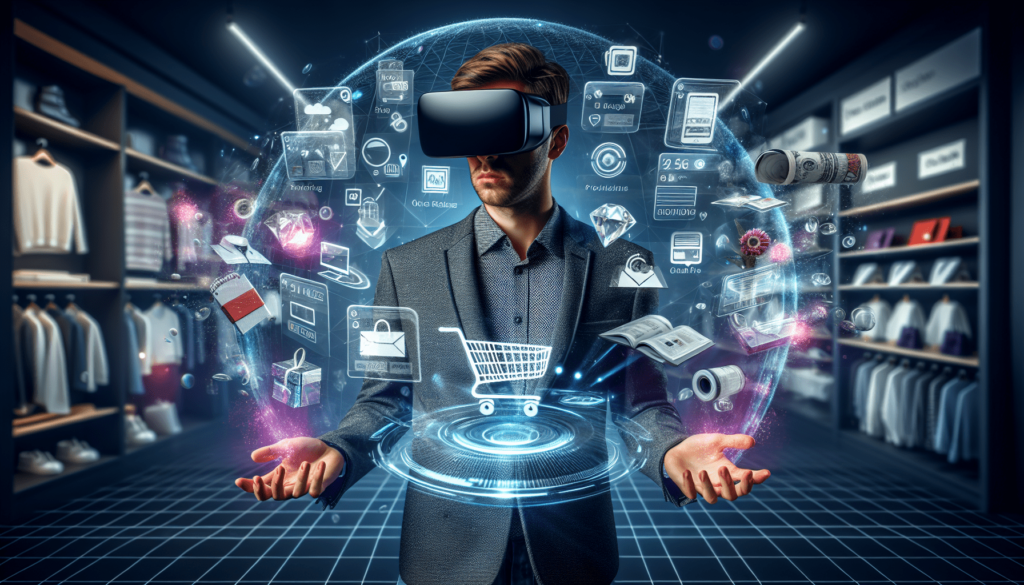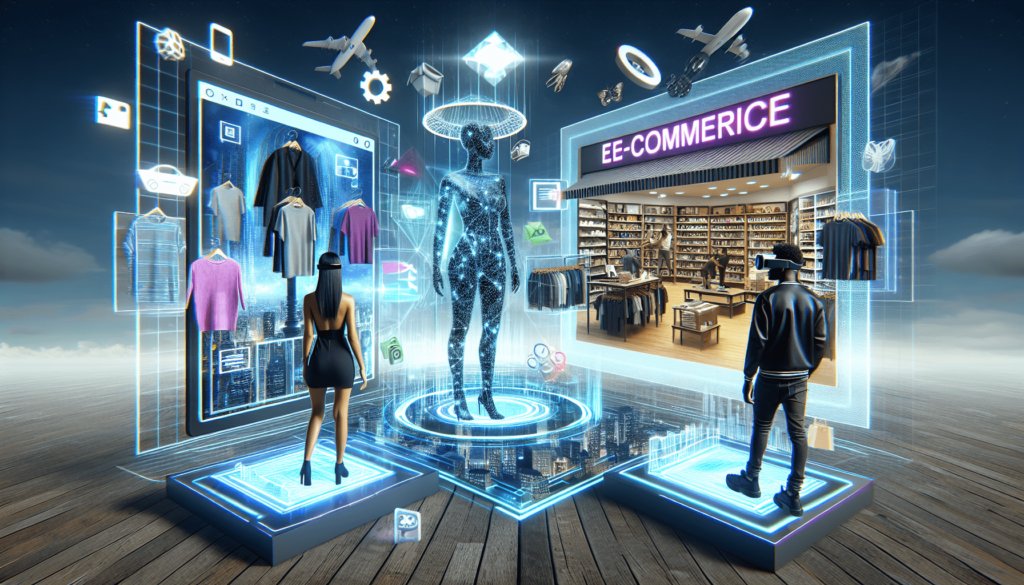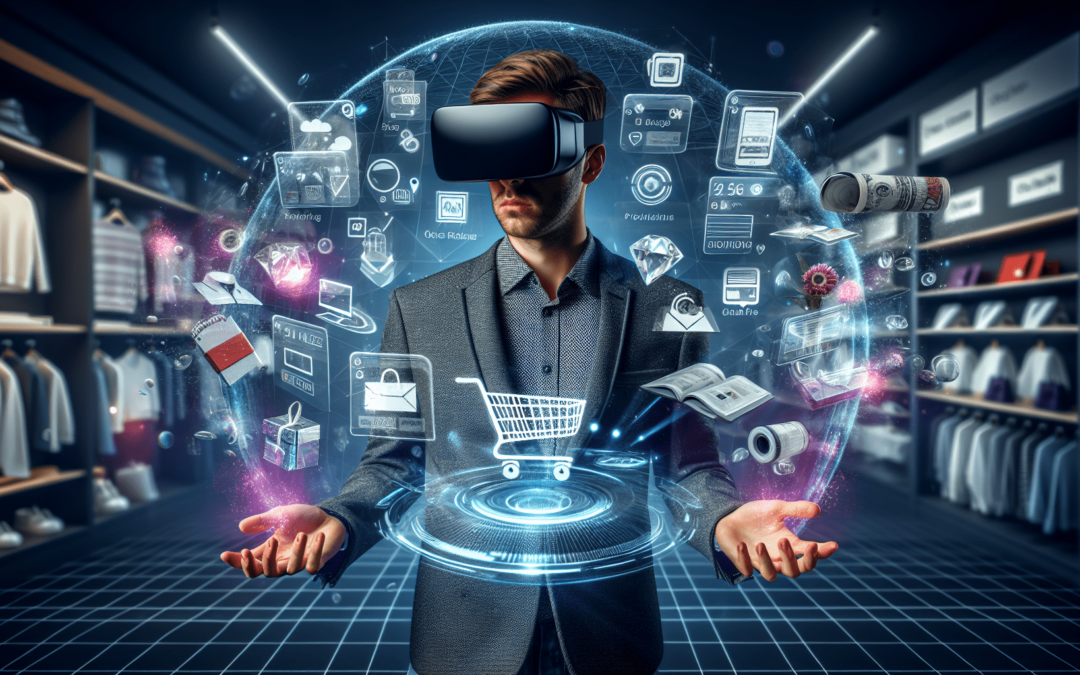In today’s rapidly evolving digital landscape, the impact of augmented reality (AR) and virtual reality (VR) on e-commerce SEO cannot be ignored. With the rise in popularity of these immersive technologies, businesses are discovering new ways to enhance the online shopping experience and drive organic traffic to their websites. Brands that harness the power of AR and VR are not only able to provide customers with a more interactive and engaging shopping experience but also improve their search engine optimization (SEO) efforts. Let’s explore how these cutting-edge technologies are revolutionizing the e-commerce industry and redefining the way businesses approach SEO.

Improved User Experience
Enhanced Product Visualization
When it comes to online shopping, one of the biggest challenges for customers is the inability to see products in person. However, with the advancements in augmented reality (AR) and virtual reality (VR), retailers are now able to offer enhanced product visualization. Through AR/VR technology, customers can virtually place products in their environment, giving them a realistic sense of how the product will look and fit. This immersive experience not only helps customers make more informed purchase decisions but also enhances their overall shopping experience.
Virtual Fitting Rooms
One of the biggest pain points in online fashion shopping is the inability to try on clothes before making a purchase. Virtual fitting rooms powered by AR/VR technology have revolutionized the way customers shop for clothing online. By simply uploading their measurements or using a virtual avatar, customers can virtually try on clothes in real-time. This not only eliminates the guesswork of sizing but also enables customers to visualize how different outfits will look on their body, improving their shopping experience.
AR/VR Product Demos
Traditional product demos often fall short in presenting the complete features and functionality of a product. However, with AR/VR product demos, customers can have an immersive and interactive experience that provides a comprehensive understanding of the product. Whether it’s showcasing the dimensions of furniture or demonstrating the functionalities of electronics, AR/VR product demos allow customers to engage with products in a way that was previously unimaginable. This not only increases customer engagement but also boosts their confidence in making a purchase.
Increased Engagement
Interactive Shopping Experience
AR/VR technology has transformed online shopping from a passive experience to an interactive one. With AR/VR integration, customers can engage with virtual objects, explore different product variations, and even customize their purchases. This level of interactivity not only keeps customers engaged but also encourages them to spend more time on the website, which can ultimately lead to higher conversion rates.
Gamification of E-commerce
Gamification has become a popular trend in e-commerce, and AR/VR technology takes it to the next level. By incorporating game-like elements into the shopping experience, such as virtual treasure hunts or rewards for interacting with products, retailers can create a fun and engaging environment for customers. These gamified experiences not only increase customer enjoyment but also foster brand loyalty and repeat purchases.
Virtual Store Walkthroughs
For brick-and-mortar retailers looking to expand their online presence, virtual store walkthroughs offer a unique opportunity to recreate the physical shopping experience. By using AR/VR technology, retailers can create virtual replicas of their physical stores, allowing customers to navigate through the aisles and browse products just as they would in a physical store. This creates a sense of familiarity and immersion, enhancing the overall shopping experience and increasing customer engagement.
Enhanced Mobile Shopping
AR/VR Integration on Mobile Devices
With the majority of online shopping now happening on mobile devices, it’s crucial for retailers to provide a seamless experience on smaller screens. AR/VR integration on mobile devices enables customers to experience augmented and virtual reality without the need for additional hardware. This opens up endless opportunities for interactive product visualization, virtual try-ons, and immersive shopping experiences, all from the convenience of a mobile device.
Mobile-Friendly AR/VR Apps
To cater to the growing number of mobile shoppers, retailers are developing mobile-friendly AR/VR apps. These apps bring the power of AR/VR technology directly to customers’ smartphones, allowing them to access interactive experiences and enhanced product visualization on the go. Mobile-friendly AR/VR apps not only improve convenience but also ensure a consistent and seamless user experience across different devices.

Reduced Return Rates
Accurate Product Visualization
One of the main reasons for high return rates in e-commerce is the discrepancy between customers’ expectations and the actual product received. AR/VR technology can significantly reduce return rates by providing customers with accurate product visualization. By allowing customers to virtually place products in their environment and view them from different angles, AR/VR technology bridges the gap between the online and offline shopping experience, minimizing the chances of disappointment upon delivery.
Virtual Try-Ons and Fittings
Clothing and accessories are often subject to high return rates due to sizing and fit issues. However, with virtual try-ons and fittings, customers can virtually try on products before making a purchase. By using AR technology, customers can see how a specific item of clothing will look on their body, ensuring a better fit and reducing the need for returns. This not only saves customers time and money but also improves the overall satisfaction and confidence in their purchases.
Improved SEO Rankings
Increased Dwell Time
Dwell time, the amount of time a user spends on a website before returning to search results, is a crucial factor in SEO rankings. AR/VR-enhanced online shopping experiences tend to increase dwell time significantly. The interactive and immersive nature of AR/VR keeps customers engaged for longer periods, exploring products, trying on virtual items, and experiencing a more personalized shopping journey. As dwell time increases, search engines recognize the website as a valuable resource, leading to improved SEO rankings.
Lower Bounce Rates
Bounce rate refers to the percentage of visitors who leave a website after viewing only one page. By offering AR/VR experiences that captivate customers and provide interactive elements, retailers can effectively lower bounce rates. AR/VR technology provides a unique and engaging experience that encourages customers to explore the website further, decreasing the likelihood of immediate exits. As bounce rates decrease, search engines perceive the website as more relevant and valuable, resulting in improved SEO rankings.
Increased Organic Traffic
The improved user experience provided by AR/VR technology can lead to increased organic traffic. When customers have a positive and engaging shopping experience, they are more likely to share their experiences with others, whether through word-of-mouth or social media. This organic sharing can drive more traffic to the retailer’s website, resulting in higher visibility and improved SEO rankings. AR/VR technology not only attracts customers but also turns them into advocates, amplifying the reach and impact of the brand.
Improved Product Descriptions
AR/VR-Enabled 3D Product Models
Traditional product descriptions often rely on static images and text to convey information. However, AR/VR-enabled 3D product models provide a more interactive and immersive way to showcase products. Customers can rotate, zoom in, and even explore the intricate details of a product through these interactive models. This level of engagement enables customers to have a better understanding of the product, making informed purchase decisions and reducing the likelihood of returns.
Interactive Product Information
In addition to 3D product models, AR/VR technology allows for interactive product information. This means customers can access additional details, such as product specifications, tutorials, or styling ideas, through AR/VR overlays. By providing interactive product information, retailers can enhance the customer’s understanding of the product and provide a more comprehensive and informative shopping experience. This not only increases customer satisfaction but also helps differentiate the brand from competitors.
Personalization and Customization
Virtual Styling and Customization
Personalization is a key trend in the e-commerce industry, and AR/VR technology plays a vital role in achieving customized shopping experiences. Virtual styling and customization features enable customers to virtually try on different combinations of products, experiment with styles, and personalize their purchases. By offering these features, retailers can cater to individual preferences, enhance customer satisfaction, and increase the likelihood of repeat purchases.
AR/VR Personalized Recommendations
AR/VR technology opens up new opportunities for personalized recommendations. By analyzing customers’ interactions with virtual products and their preferences, retailers can generate tailored recommendations that align with individual tastes and preferences. These personalized recommendations not only improve the customer’s shopping experience but also increase the chances of cross-selling and upselling, ultimately driving higher conversion rates and customer loyalty.
Enhanced Social Sharing
AR/VR-Enabled Social Media Shopping
Social media platforms have become an integral part of the online shopping experience. With AR/VR-enabled social media shopping, customers can explore and interact with products directly within their social media feeds. Whether it’s virtually trying on makeup or visualizing furniture in their homes, AR/VR technology enhances the social media shopping experience, making it more immersive and engaging. This integration between AR/VR and social media platforms not only drives customer engagement but also expands the reach of the brand.
Interactive Sharing Features
AR/VR technology provides unique opportunities for customers to share their shopping experiences with others. Whether it’s through augmented reality filters, virtual try-on challenges, or sharing interactive virtual store walkthroughs, customers can create and share content that showcases their engagement with the brand. These interactive sharing features not only generate user-generated content but also act as powerful marketing tools, increasing brand visibility and driving organic growth.
Innovative Marketing Opportunities
AR/VR Influencer Marketing
Influencer marketing has become a popular strategy for brands to reach and engage with their target audience. With AR/VR technology, brands can take influencer marketing to the next level. By collaborating with influencers who have expertise in AR/VR experiences, retailers can create immersive campaigns that capture the attention and interest of their target audience. This innovative approach not only drives customer engagement but also enables brands to differentiate themselves in a crowded market.
AR/VR Ad Campaigns
Traditional digital advertising can sometimes feel intrusive or irrelevant. However, AR/VR ad campaigns provide a unique and interactive advertising experience. By incorporating AR/VR elements into their ads, brands can captivate and engage customers in a way that traditional ads cannot. Whether it’s through interactive product demos, gamified experiences, or virtual try-ons, AR/VR ad campaigns create memorable and immersive encounters between customers and brands, effectively promoting products and increasing brand awareness.
Challenges and Considerations
Technical Implementation
While the benefits of AR/VR in e-commerce are significant, the technical implementation can be challenging. Retailers need to invest in the necessary hardware, software, and development resources to integrate AR/VR features into their websites or mobile apps. Additionally, ensuring a seamless and intuitive user experience across different devices and platforms requires careful planning and testing. Overcoming these technical hurdles is crucial to providing a smooth AR/VR experience that enhances rather than hinders the customer’s shopping journey.
User Adoption
While AR/VR technology continues to advance, user adoption can still be a barrier. Some customers may be hesitant to try new technologies or may not have access to the required devices. Educating customers about the benefits of AR/VR in e-commerce and addressing any concerns they may have can help increase user adoption. Retailers can also provide incentives, such as exclusive discounts or rewards, to encourage customers to try AR/VR features and enhance their overall shopping experience.
Cost Considerations
Implementing AR/VR technology in e-commerce comes with associated costs. The upfront investment in hardware, software, and development can be substantial for retailers, especially smaller businesses. Additionally, ongoing maintenance and updates may also incur additional costs. However, it’s important to consider the potential return on investment (ROI) that AR/VR technology can offer. By enhancing the user experience, reducing return rates, and increasing customer engagement, the long-term benefits of AR/VR in e-commerce can outweigh the initial costs for retailers willing to embrace these innovative technologies.
In conclusion, augmented reality (AR) and virtual reality (VR) have a profound impact on e-commerce SEO by improving the user experience, increasing engagement, reducing return rates, enhancing product descriptions, enabling personalization, and unlocking innovative marketing opportunities. While there are challenges and considerations to overcome, the benefits of AR/VR in e-commerce are undeniable. By embracing these technologies, retailers can create a more immersive and personalized shopping experience that delights customers and drives business growth in the digital era.


